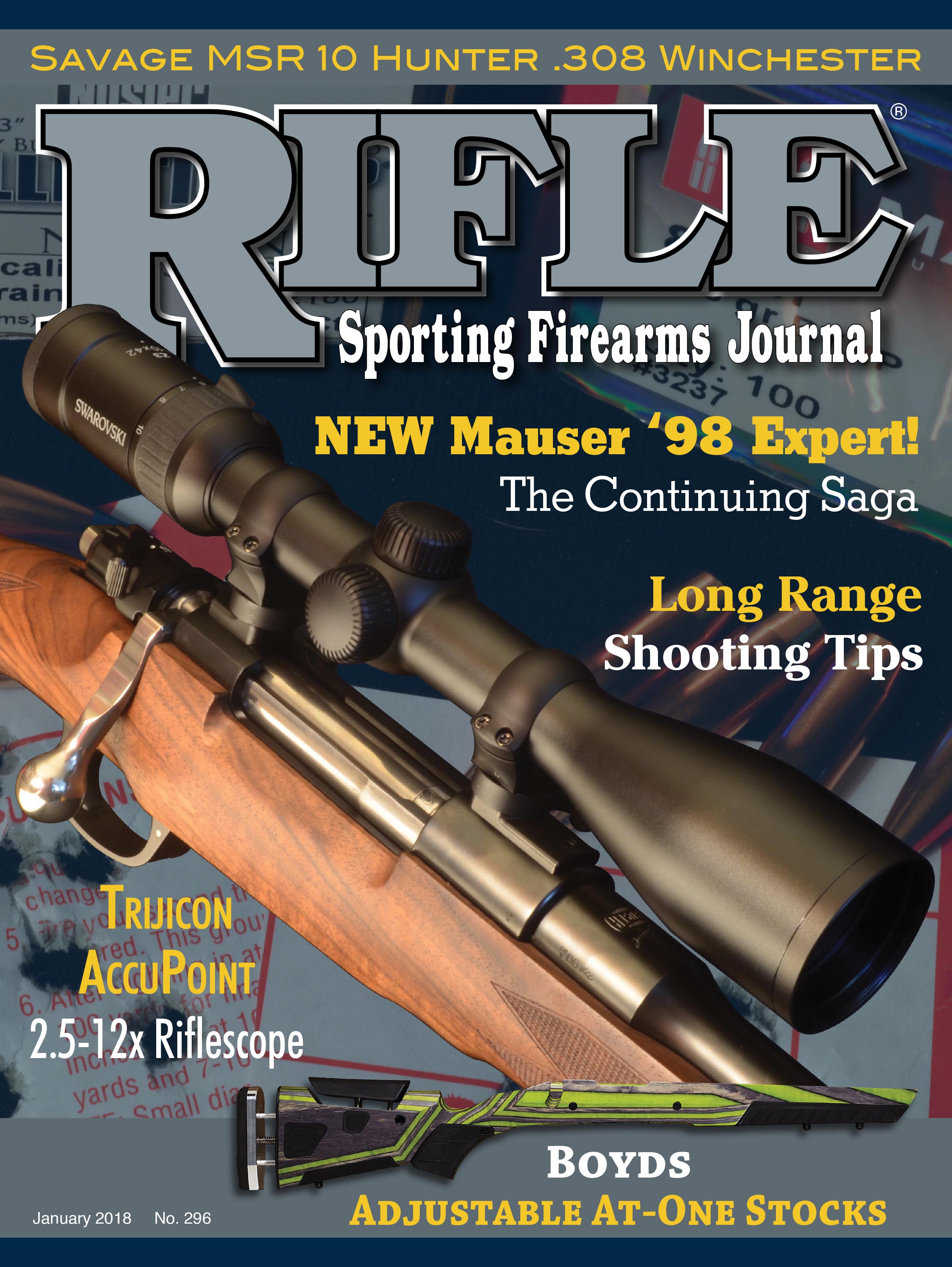A Rifleman's Optics
Trijicon AccuPoint 2.5-12.5x 42mm
column By: John Haviland | January, 18
Trijicon’s AccuPoint 2.5-12x 42mm riflescope looks like it belongs on an elk-hunting rifle. The scope has an ample magnification range for close shots in the dark timber or far across a mountain park. Its 42mm objective lens is the right size for the scope to sit low on a rifle, yet it provides plenty of light for a bright view with the scope set on higher powers.
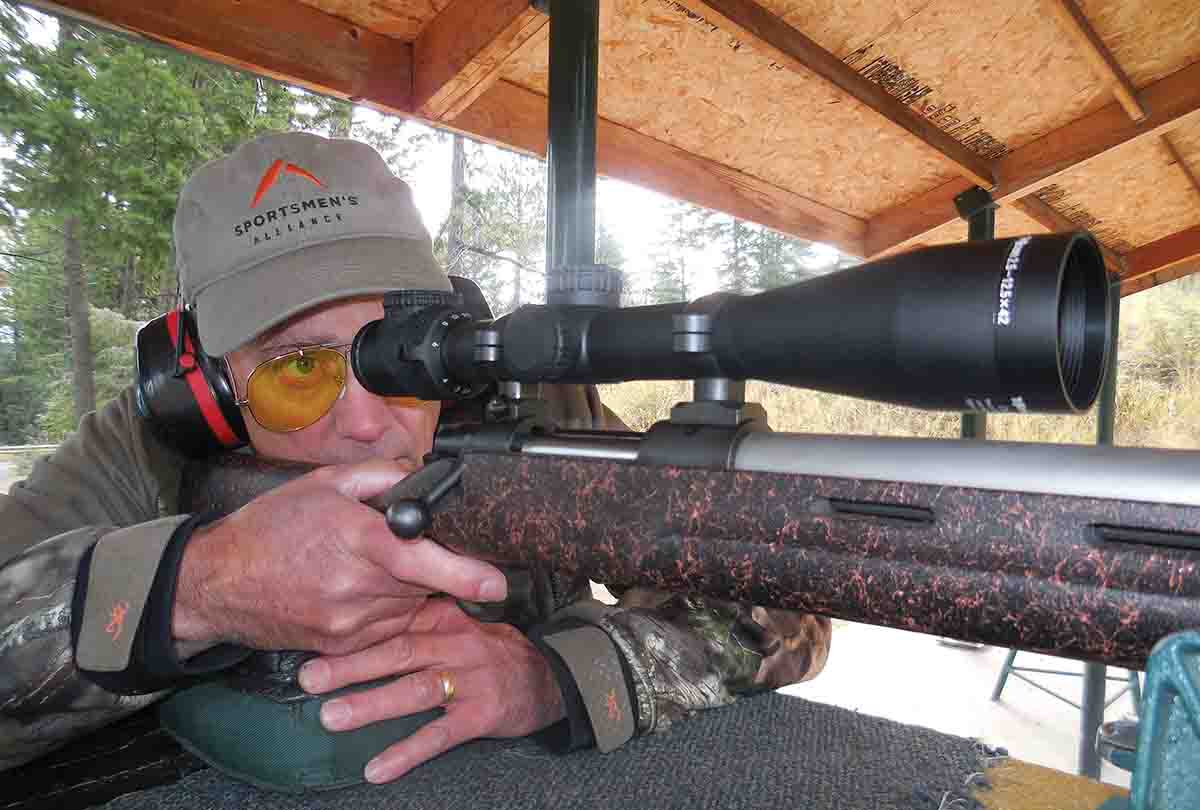
Trijicon is known for its sights with reticles illuminated with fiber optics and tritium. The AccuPoint continues that tradition with a fiber optic brightness dial that adjusts the illumination level of the reticle’s aiming point to accommodate available light, and a tritium phosphor lamp lights the reticle in low- to no-light conditions.
A trustworthy scope on an elk rifle must endure rugged rides and the heat of horse sweat in a saddle scabbard, deflect rain, snow, ice and the knocks that may occur. It must be reliable when that one shot of the season appears.
With a retail price of $1,300, the AccuPoint should stand up to some harsh treatment, so I was rather cruel to the test sample on hand. The scope took an hour-long bath in a sink of hot water. No telltale bubbles rose from the scope. The dripping wet scope was then put in the freezer for several hours. It came out with a coat of frost on the outside. The center of the lenses is thickest and retains cold the longest, and that is where any moisture inside the scope shows up. No frost appeared on the inside of the objective lens, indicating the scope had been purged of moisture and well-sealed during assembly.
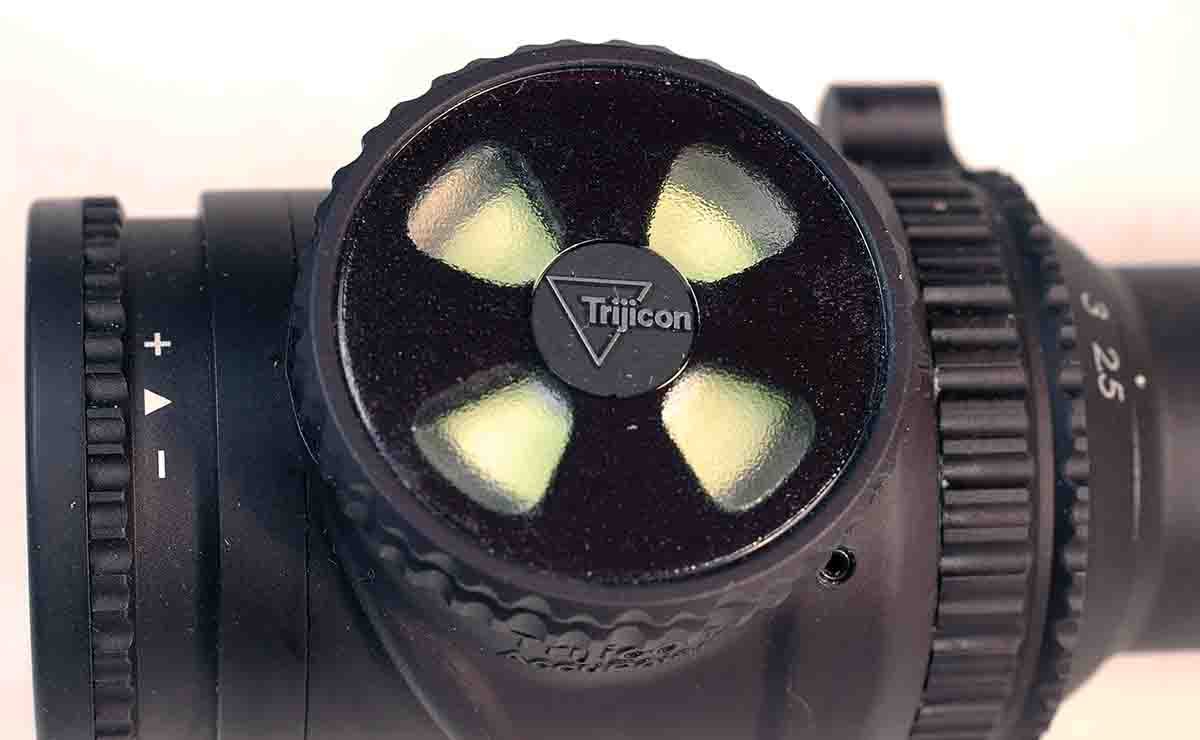
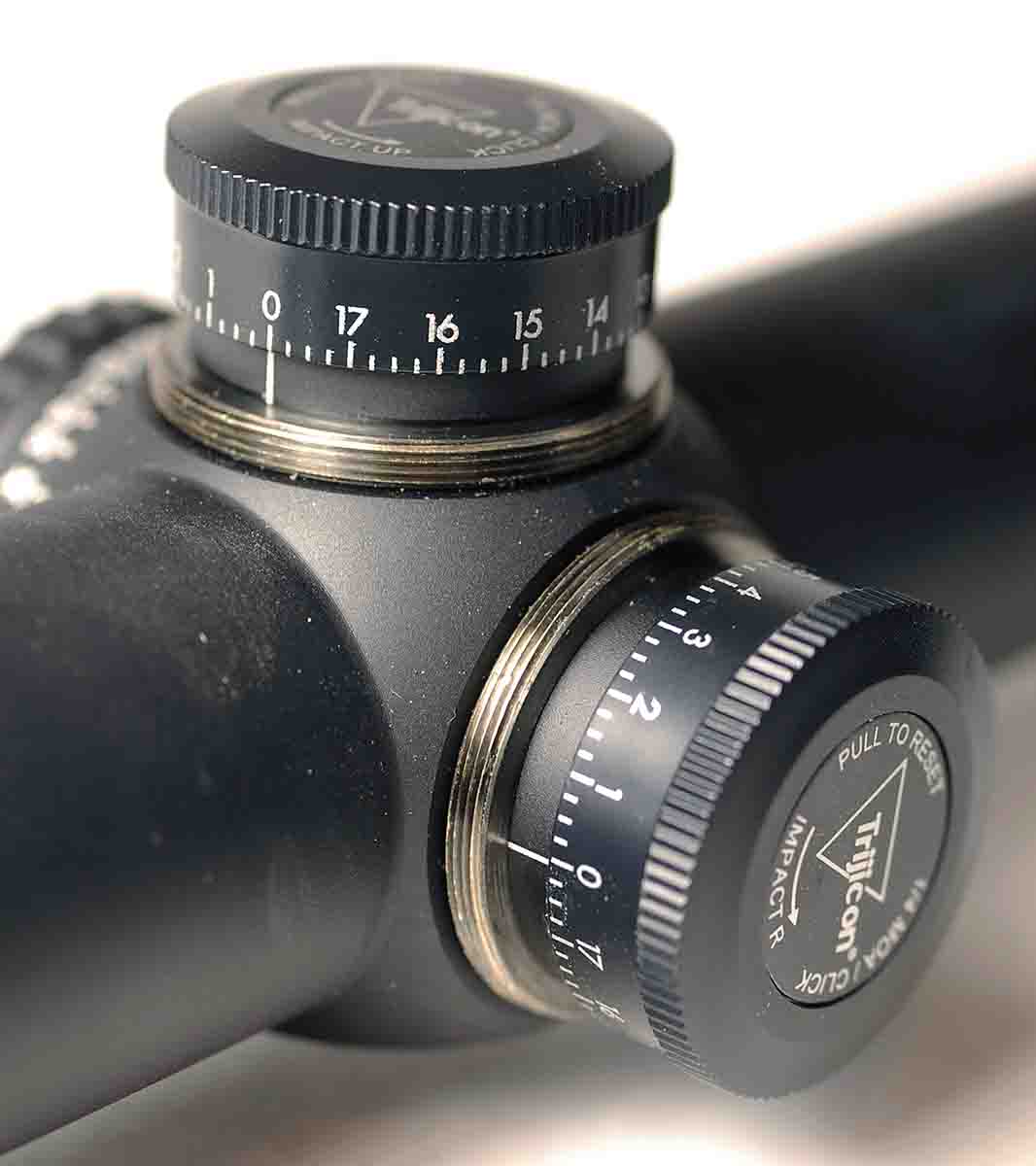
The parallax dial was frozen, and it took a bit of force to break it free. The fiber optic brightness dial, focus dial and magnification dial turned somewhat stiffly compared to their unfrozen state.
The scope has eye relief of 3.9 inches. I held a piece of white paper that distance from the scope’s ocular lens and shined a flashlight through the scope’s objective lens. With the scope set on 10x, it projected a 4.2-millimeter diameter circle of light, or exit pupil, on the paper. That showed there was no aperture next to the objective lens to restrict view to the center of the lens where the view is the sharpest.
Trijicon notes the scope’s “multi-layer coated lenses provide superior light transmission.” A flashlight shined into the objective lens showed small circles of colored, reflected light, indicating all the lenses were coated. I looked through the AccuPoint, set to various magnifications, at a 1951 USAF resolution test chart at 100 yards. The scope provided as sharp a view as other scopes of similar power, objective lens size and price. As I moved the scope to the outer edge of the view, left to right and up and down, the vertical and horizontal bars on the chart dimmed only ever so slightly.
One gloomy evening I looked through the scope every few minutes as the day turned to night. Fifteen minutes after sundown, the largest set of bars on the test chart placed at 50 yards were plainly visible with the scope at all power settings. Fifteen minutes later, however, the grid was only visible on 4x and higher. Set on 8x, the scope seemed to provide the brightest and sharpest view. Fifteen minutes after that, the chart vanished through the scope set to any power, and it was difficult to even see the scope sitting on the table.
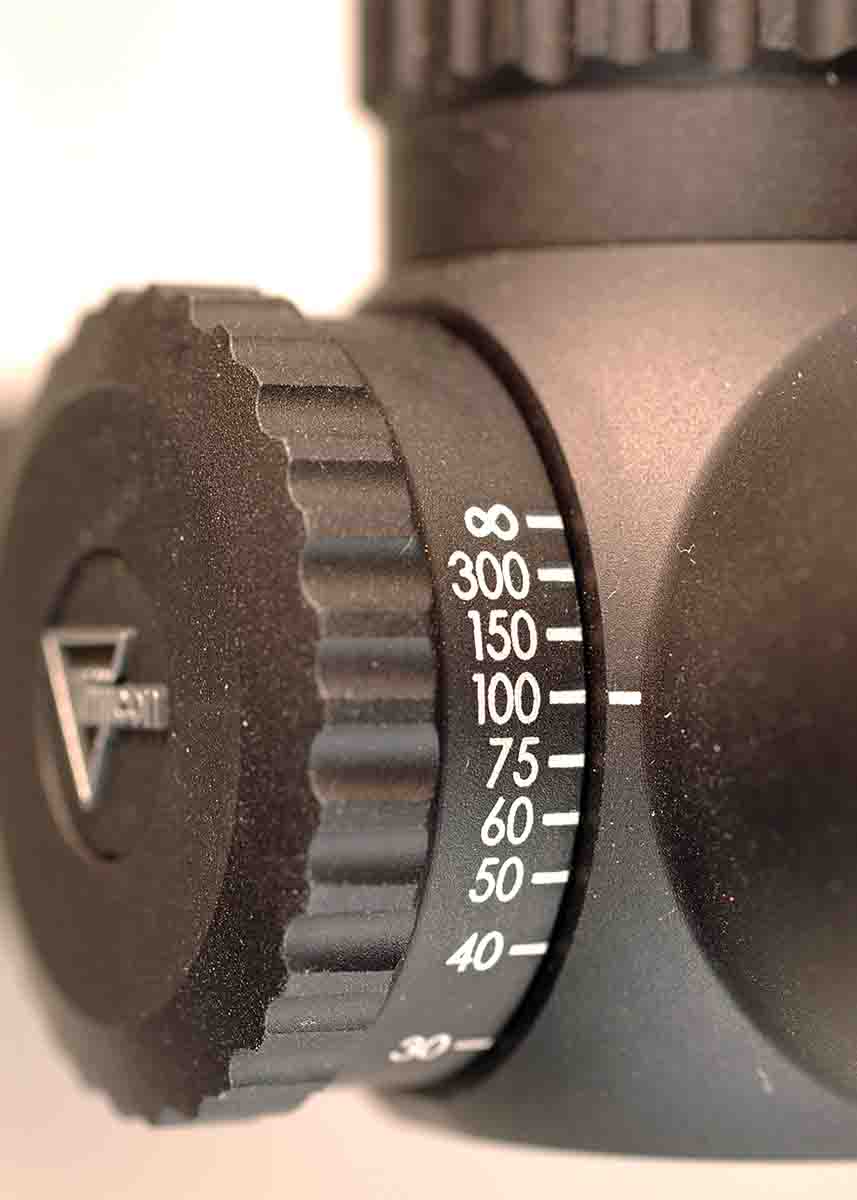
To check the scope’s reticle adjustment reliability, a couple of bullets were shot on a target at 100 yards. A couple more shots were fired each time after turning the windage turret left 28 clicks; the elevation turret up 28 clicks; the windage 28 clicks right and the elevation turret down 28 clicks. The result was a 7-inch square box, punctuated by bullet holes at each corner. The first and final bullets formed a 1.40-inch group.
Seven models of the AccuPoint riflescope are available, from 1-4x 24mm to 5-20x 50mm. Reticle options include a triangle post, standard crosshair, German No. 4 and crosshair and circle in the lower-power models. Higher-power models can be had with reticles with dots on the vertical and horizontal wires, with dots spaced apart in milliradian or minute of angle. The AccuPoint’s reticle is placed in the second focal plane, so dot spacing is correct with the scopes set on their highest power.
The AccuPoint 2.5-12.5x 42mm came with a MOA-dot crosshair.Dot diameters are .65 inch, with three on each side of the center of the reticle on the horizontal wire and six on the bottom vertical wire. Dot spacing is 2 MOA at 100 yards. That spacing provides an uncluttered view.
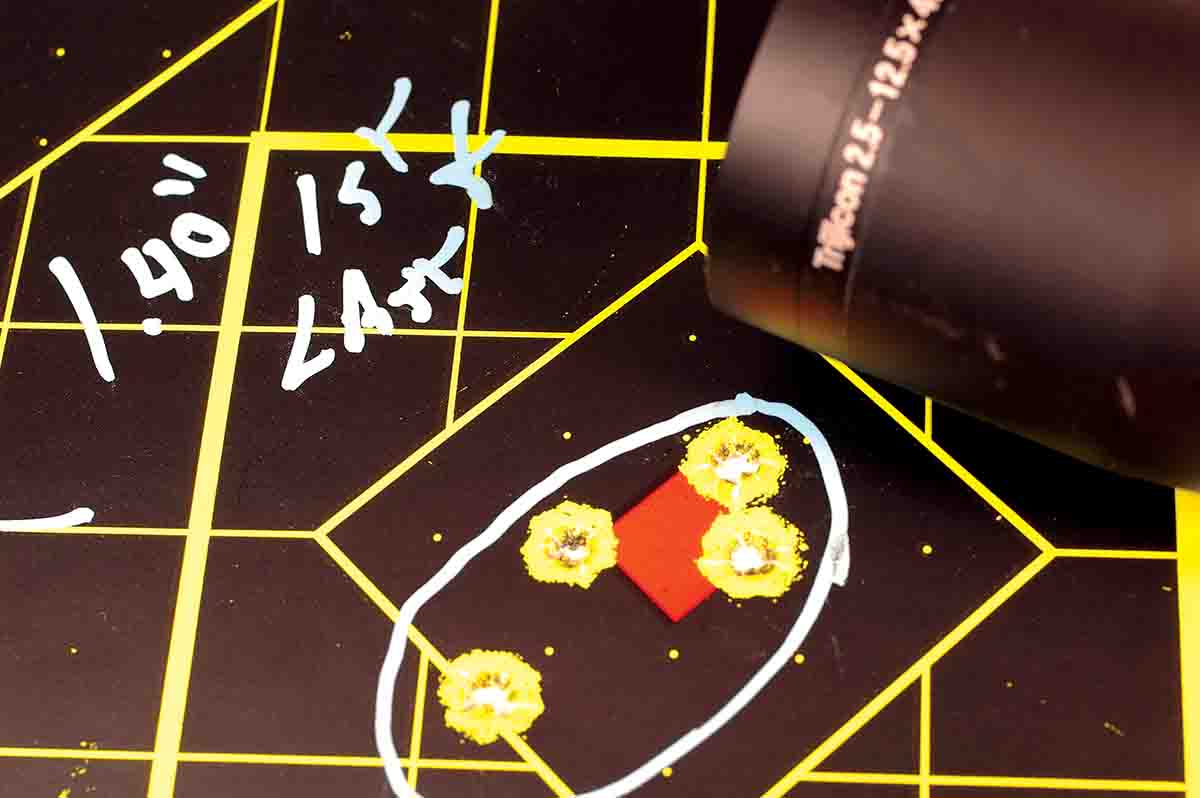
The battery-free, illuminated reticle is unique to the AccuPoint. Turning the brightness dial on top of the ocular lens housing adjusts the illumination level of the reticle’s aiming point to coincide with available light. The green dot, about the size of a pinhead, is barely visible during full daylight. As evening approaches, the green dot readily appears. The tritium phosphor lamp lights the reticle as the crosshairs fade in the dark. That’s perfect for hunting the doghair timber where elk hide. Now if I can just find an elk this season.


